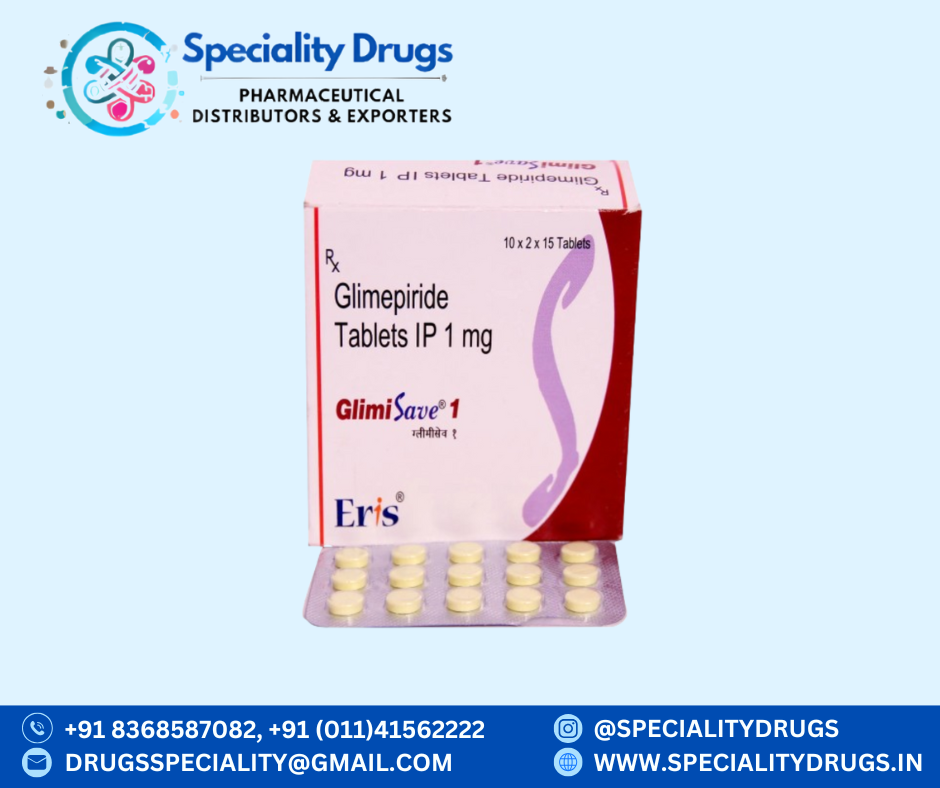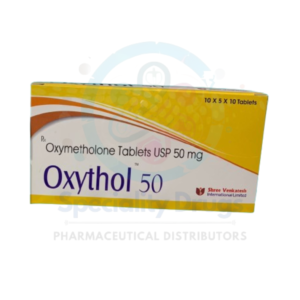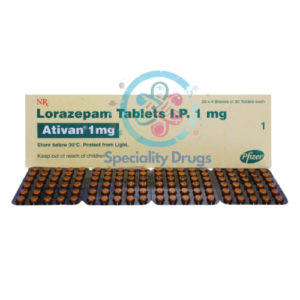What is GLIMISAVE 1?
GLIMISAVE 1 is an oral antidiabetic medication containing Glimepiride, used to control high blood sugar levels in patients with type 2 diabetes mellitus.
What is the Use of GLIMISAVE 1?
- Manages high blood sugar in type 2 diabetes
- Helps the body produce more insulin and improve insulin sensitivity
- Works in combination with diet and exercise to maintain normal blood glucose levels
Benefits of GLIMISAVE 1
- Controls blood sugar levels effectively
- Reduces the risk of diabetes-related complications
- Improves glycemic control and overall metabolic health
- Convenient once-daily oral dose
Side Effects of GLIMISAVE 1
Common side effects:
- Hypoglycemia (low blood sugar)
- Nausea or vomiting
- Dizziness or headache
- Mild weight gain
Serious side effects (rare):
- Severe hypoglycemia
- Allergic reactions (rash, itching, swelling)
- Liver or kidney function changes
Important Notes
- Administration: Take orally once daily with breakfast or as prescribed.
- Precautions: Monitor blood sugar regularly; inform your doctor about other medications and health conditions.
- Storage: Store in a cool, dry place, away from sunlight.
- Presentation: 1 mg tablet
1. What is GLIMISAVE 1 used for?
It is used to control high blood sugar in patients with type 2 diabetes mellitus.
2. What is the active ingredient in GLIMISAVE 1?
The active ingredient is Glimepiride.
3. How does GLIMISAVE 1 work?
It stimulates the pancreas to produce more insulin and improves the body’s sensitivity to insulin.
4. How should GLIMISAVE 1 be taken?
Take orally once daily with breakfast or as directed by your doctor.
5. Can GLIMISAVE 1 cause low blood sugar?
Yes, hypoglycemia is a common side effect; monitor blood sugar regularly.
6. Can children take GLIMISAVE 1?
It is generally prescribed for adults with type 2 diabetes; consult a doctor for pediatric use.
7. Can GLIMISAVE 1 be taken during pregnancy?
Use only if prescribed by a doctor; alternatives may be preferred during pregnancy.
8. Can breastfeeding mothers take GLIMISAVE 1?
Consult a doctor before use, as it may affect the baby.
9. What are common side effects of GLIMISAVE 1?
Nausea, dizziness, headache, mild weight gain, and hypoglycemia.
10. Are serious side effects possible?
Rarely, severe hypoglycemia, allergic reactions, or liver/kidney function changes may occur.
11. Can GLIMISAVE 1 be combined with other diabetes medications?
Yes, under doctor supervision, it can be combined with other oral antidiabetics or insulin.
12. How should I store GLIMISAVE 1?
Store in a cool, dry place, away from sunlight and moisture.
13. Can GLIMISAVE 1 replace diet and exercise?
No, it works best when combined with a healthy diet and regular exercise.
14. What should I do if I miss a dose?
Take it *as soon as possible






Reviews
There are no reviews yet.